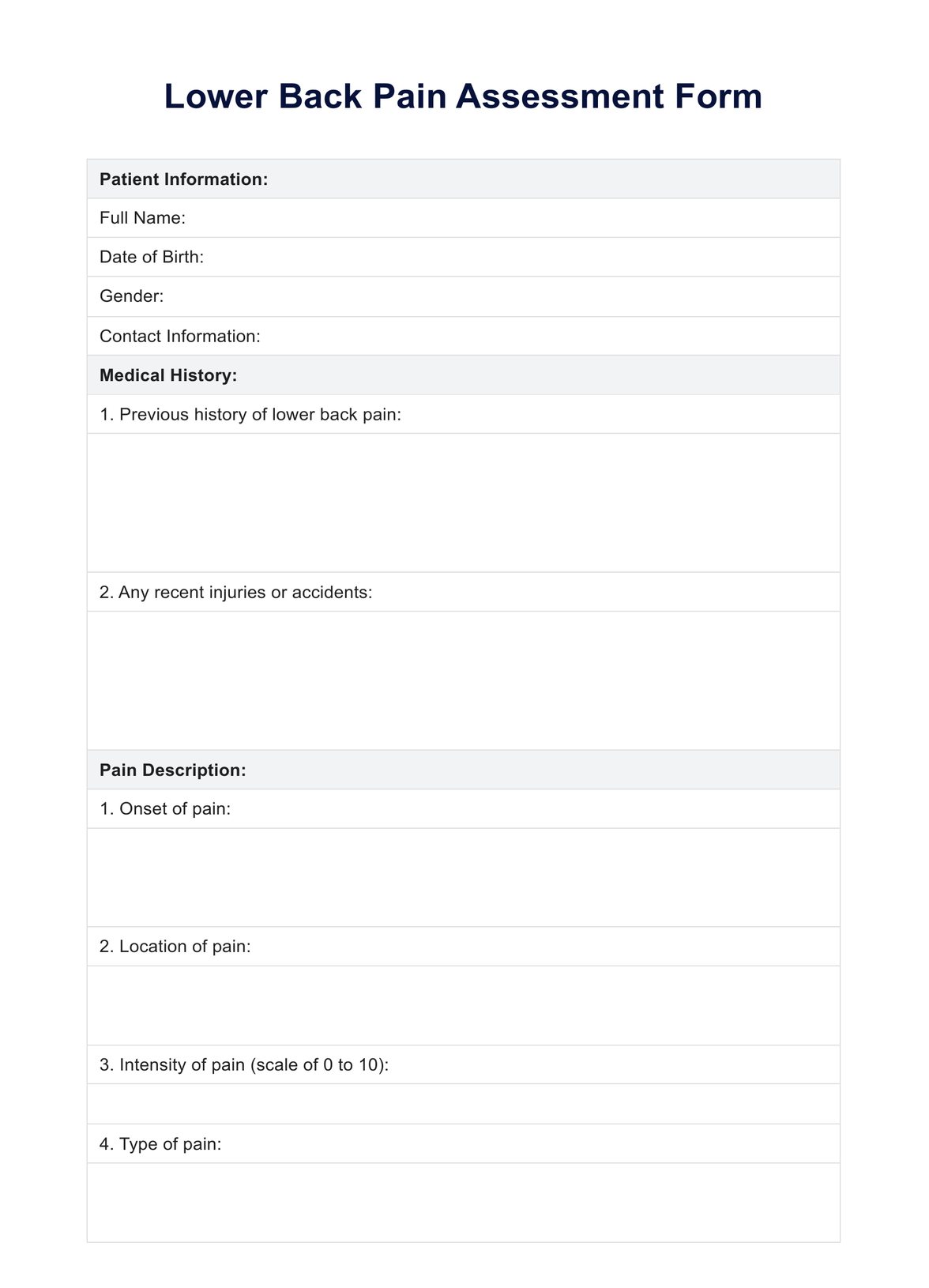Maintain good posture, exercise regularly on core strength, and practice proper lifting techniques to prevent strain on the lower back.

Low Back Pain Exercise PDF
Download a free PDF that includes low back pain exercises with step-by-step instructions and examples. These exercises can help alleviate and prevent low back pain.
Low Back Pain Exercise PDF Template
Commonly asked questions
Common triggers for lower back pain include poor posture, sedentary lifestyle, heavy lifting without proper technique, and underlying conditions such as herniated discs or muscle strains.
Factors that can worsen lower back pain are sedentary behavior, prolonged sitting, lifting heavy objects improperly, and repetitive motions without proper conditioning. Additionally, stress and lack of proper sleep can contribute to heightened discomfort.
EHR and practice management software
Get started for free
*No credit card required
Free
$0/usd
Unlimited clients
Telehealth
1GB of storage
Client portal text
Automated billing and online payments











